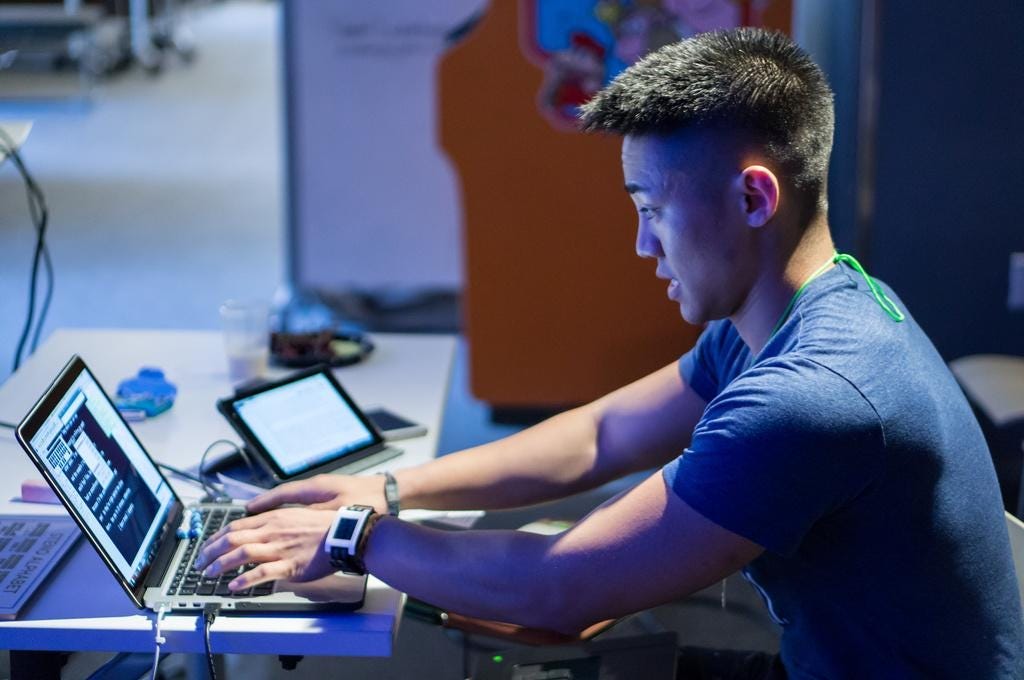Become the Mind Behind the Code: What to Expect from a Full Stack Developer Course
It is now easier than ever to learn to build complete web applications from scratch. A full stack developer course is where beginners start to step into the software development arena. It gives students a complete overview of front-end and back-end development, where students can understand how websites and applications work behind the scenes. The course equips students with developer thinking and creates real-world solutions with code. For all those who are interested in protecting these applications, cyber security courses can be a valuable addition, where you can learn how to safeguard systems against digital threats.
- Learning Front-End Development: Front-end development is all about website elements that are visible and can be interacted by users. A full stack developer course begins with HTML, CSS, and JavaScript. They are the components used to construct web pages. HTML constructs the building, CSS gives style to the content, and JavaScript makes everything functional. Students also learn to employ cutting-edge tools and frameworks such as React or Angular to load sites quickly and conveniently. Such courses enable students to create web pages that not only look good but also function well on phones, tablets, and computers.
- Learning Back-End Development: The back end is the engine behind the website or application. It’s where stuff is kept and where decisions are made. In full stack development courses, beginners are instructed to use programming languages such as Python, Java, or Node.js to develop the logic of an application. They are also instructed on how to manage databases, link applications to servers, and regulate what occurs when users click on buttons or send messages. This section of the course instructs on how to logically think out problems and ensure the application is running optimally for everyone.
- Learning to Work with Databases and Storage: Databases are where data in an application is kept. When a person signs up, places an order, or sends a message, that data is stored somewhere. Within the course, students learn how to store that data by using tools like MySQL, MongoDB, or PostgreSQL. They are aware of how to create tables, store user data, and keep it safe. Knowing how to create and manage databases gives students the ability to build finished apps that don’t lose information and run properly.
- APIs and Integration: APIs, or Application Programming Interfaces, enable various systems to communicate with one another. Within a full stack developer course, students learn to utilize APIs to retrieve data from another source or send data into another system. This proves extremely helpful when creating apps that interact with maps, payment gateways, or weather information. Students will also learn how to make their APIs so that others can use their apps.
- Working on Projects for Real-World Experience: Perhaps one of the most beneficial areas of a full stack developer course is learning through doing projects. Students don’t just learn theories; they apply them by building websites, apps, and tools. The projects help them solve real-world problems, put their coding into practice, and see how everything fits together. Some of these projects might include building a personal blog, an e-commerce site, or a task manager. They also help students build a portfolio that they can use when looking for employment, therefore, having an enormous advantage in the job market.
- Learning Deployment and Hosting: It is not simply launching a website or application. Students are also taught how to deploy their projects so that other people can use them. This part of the course addresses deploying their apps on the internet using tools like GitHub Pages, Netlify, or cloud providers. They also learn to manage server settings, keep sites fast, and secure them from security threats. Students achieve the whole experience of bringing an idea into reality and creating a product that people use while deploying apps.
- Building Problem-Solving Skills: One of the key aims of the course is to enable students to think like developers. When developing apps, issues will arise. Becoming proficient in fixing them is as important as learning to code. Teachers demonstrate how to debug code, locate bugs, and improve things. Students become increasingly confident over time at bug fixing and finding ways to do it better. These problem-solving skills are useful not only in development but also in life and other careers.
Conclusion
In conclusion, a full stack developer course is not merely a class—it’s a whole learning experience that teaches freshers how to build helpful and full-featured applications from scratch. With theory and practice in combination, the students feel confident and capable of venturing into the world of technology. Whether they want to develop their apps or work as part of a team, this course gives them everything they need to start. And if one wants to further develop, combining this with a Generative AI course with certificate can make even more things possible in our fast-changing modern digital era.

